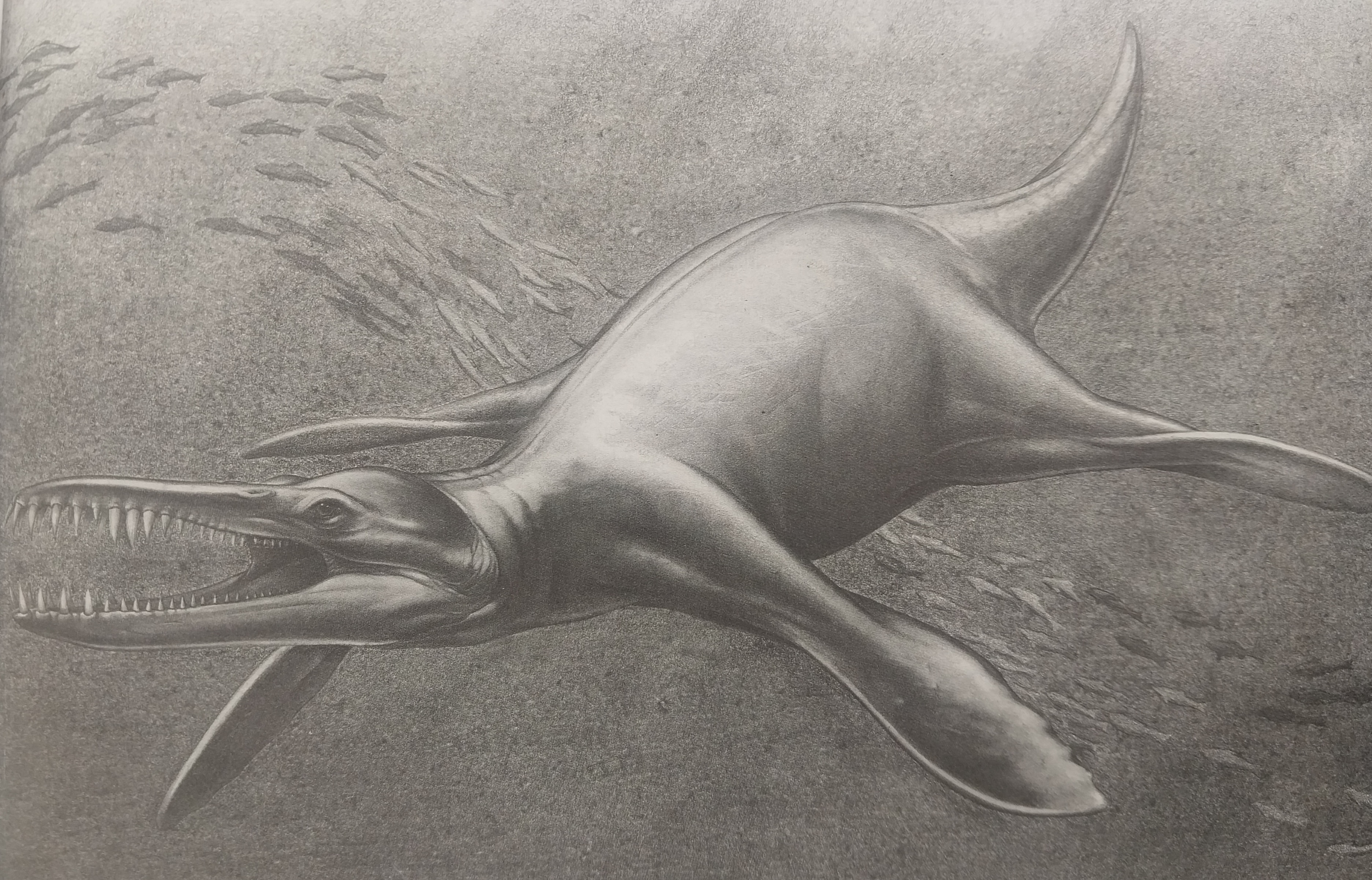Kronosaurus Queenslandicus
| Kronosaurus Temporal Range: Early Cretaceous | |
 | |
| Classification | |
| Genus | Kronosaurus |
| Species | queenslandicus |
| Family | Pliosauridae |
| Fossil record | |
| Fossil range | Early Cretaceous |
Kronosaurus queenslandicus was one of the largest marine reptiles that lived during the Early Cretaceous period, about 100 million years ago. It is one of the best-known pliosaurs, a group of short-necked, large-headed marine reptiles. It is named after the Greek titan Kronos, who devoured his children, a fitting name for such a massive and ferocious predator.
Discovery and Description
Kronosaurus queenslandicus was first described by Heber Longman, the then Director of the Queensland Museum, from fossils discovered near Hughenden, Queensland, in 1899. Longman identified the creature as part of the Pliosauridae family, a group of marine reptiles characterized by their large, short-necked bodies and powerful jaws. The first fossils included parts of a skull and some vertebrae. In 1924, Longman formally named the species Kronosaurus queenslandicus in his publication.
The pliosaur measured approximately 14 meters in length, with about 25% of that length consisting of its massive skull, which was filled with conical teeth designed for gripping and tearing apart large prey. Its formidable size and strong jaw muscles made it an apex predator of the ancient seas, where it preyed on fish, turtles, ichthyosaurs, and other plesiosaurs.
The Cretaceous oceans were teeming with a variety of large marine reptiles, and Kronosaurus queenslandicus would have been one of the dominant predators. Its short neck and large flippers suggest it was a fast and agile swimmer, capable of pursuing and overpowering its prey in the open seas.
Further Discoveries
In 1931-32, W.E. Schevill from Harvard University’s Museum of Comparative Zoology embarked on a fossil-hunting expedition in northern Queensland, Australia. During his search, Schevill collected two important Kronosaurus queenslandicus specimens, which included a partial juvenile skull and a nearly complete adult skeleton. These specimens were shipped back to the United States, where they were painstakingly prepared over a period of 25 years. The adult skeleton was later put on display as one of the key exhibits in Harvard's Museum of Comparative Zoology in the late 1950s. Missing parts of the skeleton were restored based on other pliosaur specimens for an accurate reconstruction.
In 1935, another significant Kronosaurus specimen was found between Richmond and Hughenden, Queensland. The specimen included a partial skull and some of the postcranial skeleton. This fossil was collected by Alan Bartholomai, the Director of the Queensland Museum, and is currently being prepared for display in the Queensland Museum in Brisbane.
Anatomy and Adaptations
Kronosaurus queenslandicus had a number of adaptations that made it a top predator in the Cretaceous seas. Its large, elongated skull, equipped with powerful jaws and large, conical teeth, allowed it to grip and tear its prey with ease. The teeth were especially effective against large, fleshy prey like other marine reptiles and large fish. The animal’s short neck would have provided greater stability and control in the water, allowing it to deliver powerful bites without losing balance.
Its body was designed for fast swimming, with four large, paddle-like flippers that gave it excellent maneuverability in the water. These adaptations allowed Kronosaurus to hunt swiftly and efficiently, ambushing prey or chasing it down over short distances.
One of the defining features of Kronosaurus was its massive skull, which could take up to 25% of its entire body length. This, combined with its large, muscular body, made it one of the most formidable predators in the marine environment during its time.
Significance in Paleontology
Kronosaurus queenslandicus remains one of the most significant marine reptiles ever discovered in Australia. Its size and predatory adaptations make it a key example of pliosaur evolution. The discovery and study of Kronosaurus specimens have provided paleontologists with valuable insights into the diversity of marine reptiles during the Mesozoic era, especially in Australia’s ancient seas. It is also notable for the quality of its fossil specimens, particularly the nearly complete skeleton displayed at Harvard's Museum of Comparative Zoology, which has become an iconic representation of marine reptiles in paleontological exhibitions. [1]
Classification
Kronosaurus queenslandicus belongs to the order Sauropterygia, family Pliosauridae.
• Class: Reptilia
• Order: Sauropterygia
• Family: Pliosauridae
• Genus and species: Kronosaurus queenslandicus Longman, 1924
Fossil Exhibitions
The most complete Kronosaurus queenslandicus fossil is exhibited at Harvard’s Museum of Comparative Zoology, where it remains a centerpiece of the museum's marine reptile collection. A second specimen is currently being prepared for public display at the Queensland Museum in Brisbane.

